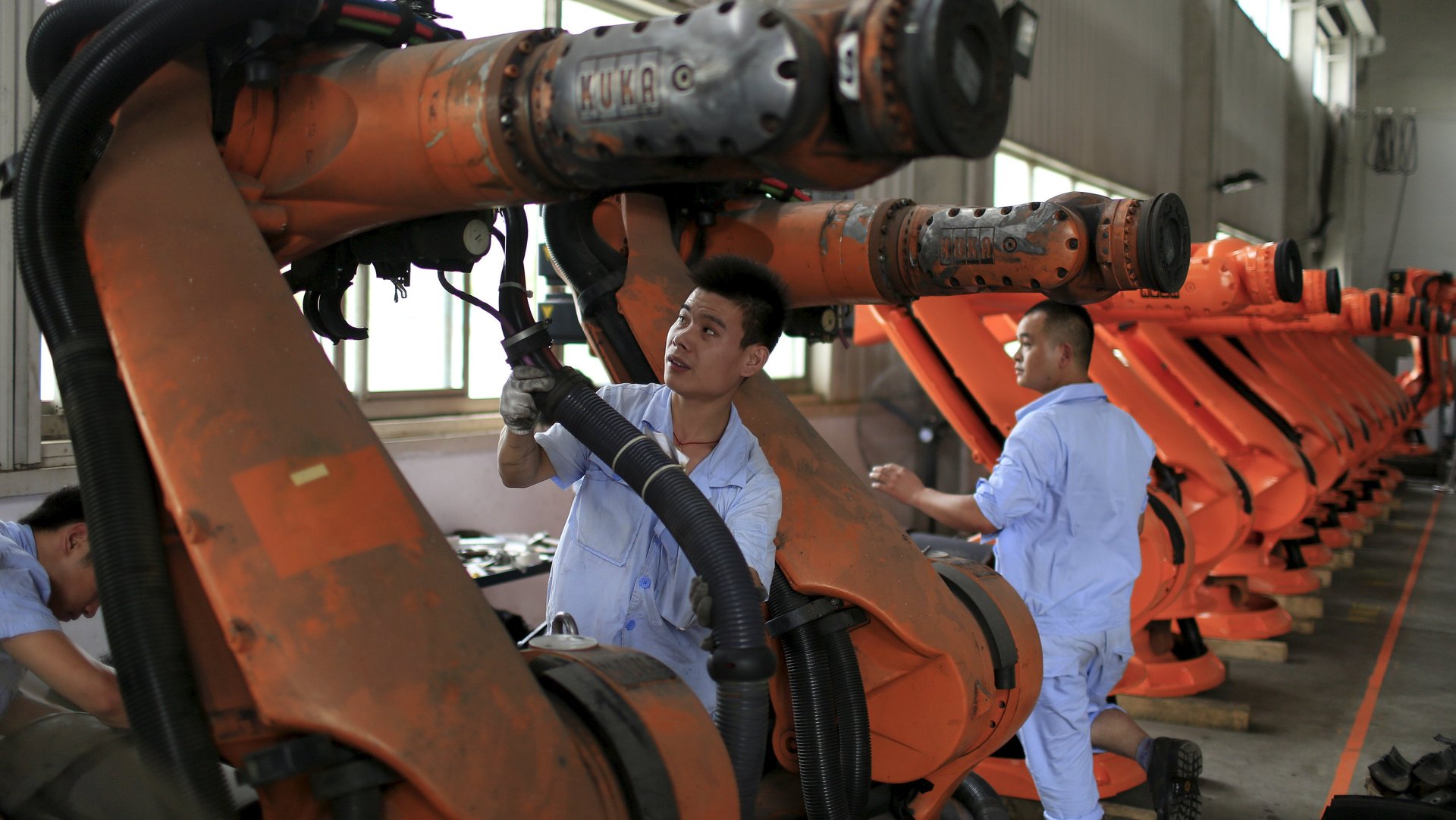China is rapidly making robots that will one day manufacture everything you buy
China is getting serious about manufacturing’s robot revolution.


China is getting serious about manufacturing’s robot revolution.
On Feb. 28, its statistics bureau released an annual report that summarizes the economy’s performance over the past year. It showed that, in terms of output growth, industrial robots beat all other categories, with the 72,000-plus sets produced marking a 30.4% annual increase from 2015 (albeit from a relatively small base).
China’s rush to automate manufacturing stems from two trends. First, the country’s working-age population is shrinking, leading to rising labor costs. One way China’s factories can cope with this squeeze is to rely less on workers. In addition, the government aims to bolster its tech sector in order to reduce its reliance on foreign companies.
Both on the national and local level, the government has played a large role in pushing for more robots. In 2015 the Guangdong province, one of China’s major manufacturing hubs, announced it would spend about $150 billion on encouraging robotics-based manufacturing. Its support typically arrives in the form of subsidies for factories looking to add robots to their assembly lines, as well as for companies building robots for other manufacturers.
In the five-year plan it announced last year, the national government said China would boost its annual production of industrial robots to 100,000 by 2020.
At the current rate, the country is on track to exceed that target, assuming the numbers from the statistics bureau can be trusted—not a given in China (the bureau did not respond to questions Quartz sent by email). Meanwhile, over 3,000 industrial robot makers have surfaced in the country in the past five years, according to the China Robot Industry Alliance, a trade group.
China is already the world’s largest producer of industrial robots, supplying about 27% of the global market since 2015, according to the International Federation of Robotics (IFR). It’s also the largest buyer of robots. According to the IFR and Bernstein Research, China’s factories spent over $3 billion acquiring industrial robots in 2015.
Despite the rapid growth, China’s robotics industry has yet to catch up to the best overseas companies. Most of the industrial robots that China produces are relatively simple compared to the machines made by well-known foreign companies like Japan’s Fanuc or Switzerland’s ABB. About 69% of the industrial robots that Chinese factories purchase for themselves come from abroad, and most robots made in China rely heavily on imported foreign components.
This gap could ultimately lead to more acquisitions of foreign companies. Last year Chinese appliance maker Midea paid about $5 billion for Kuka, Germany’s century-old maker of manufacturing equipment and a leader in industrial robotics. Months after that, Zhejiang Wanfeng Technology Development, a subsidiary of a Chinese car parts supplier, purchased US-based Paslin, a robotics maker focused on the automotive industry, for about $300 million.
If China’s robot makers can’t match the quality of their rivals in the coming years, buying them might be just as efficient.